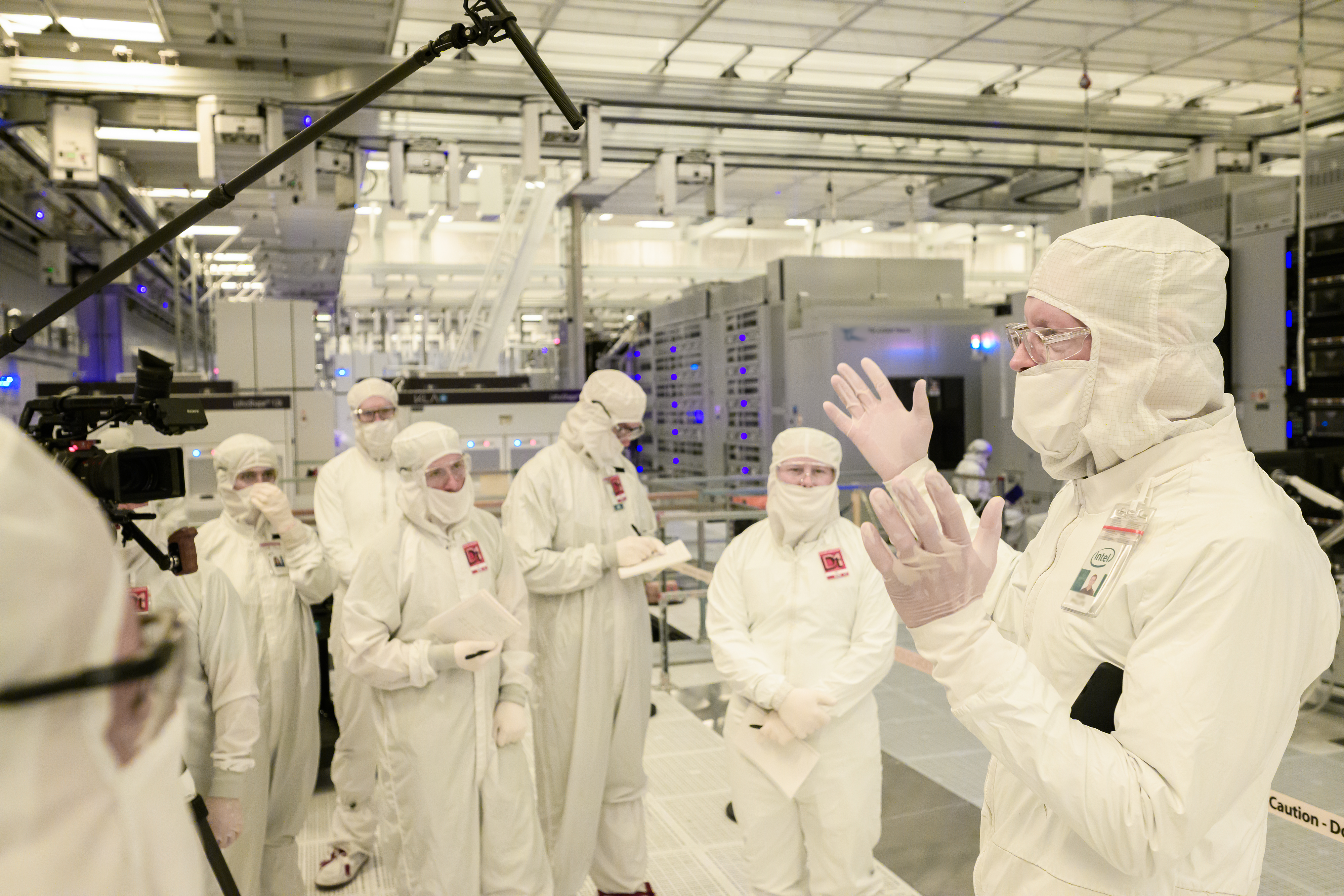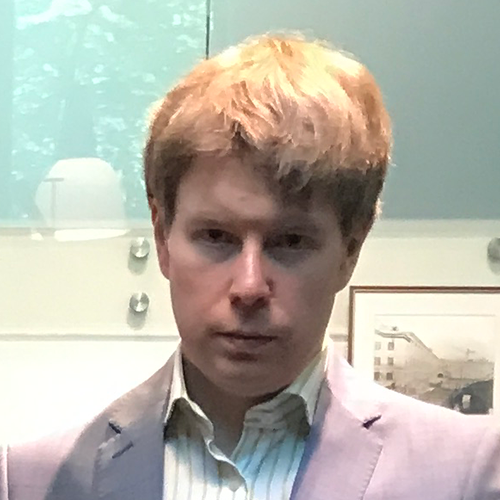Russia plans EUV chipmaking tools that it says will be cheaper and easier to build than ASML's — country outlines new roadmap to smaller chips
But when?

Russia has unveiled a roadmap to develop its own lithography machines, aiming to create less costly and complex equipment than ASML's systems, according to CNews. These machines will use lasers operating at a wavelength of 11.2 nanometers instead of the standard 13.5 nm used by ASML. This wavelength will be incompatible with existing EUV infrastructure and require Russia to develop its own lithography ecosystem, which will likely take years, if not a decade or more.
EUV tools with a 11.2nm wavelength
The Russian semiconductor initiative is led by Nikolay Chkhalo from the Russian Academy of Sciences’ Institute of Microstructure Physics. The plan is to build EUV machines that offer competitive performance while lowering manufacturing and operational expenses compared to ASML's EUV tools.
Unlike ASML's EUV lithography systems, Russian EUV scanners will use a xenon-based laser source with an 11.2 nm wavelength instead of ASML’s tin-based systems. Chkhalo says the 11.2nm wavelength offers a 20% improvement in resolution, allowing for finer detail while simplifying the design and reducing the costs of optical components. This adjustment significantly decreases contamination of optical elements, extending the lifespan of critical parts like collectors and protective pellicles. The design also allows for silicon-based photoresists, which are expected to perform better at the shorter wavelength.
The Russian lithography machines will be less powerful than ASML's, with a throughput approximately 2.7 times lower due to using a 3.6 kW light source. However, this performance is deemed sufficient for small-scale production.
Although 11.2 nm still falls within the extreme ultraviolet spectrum, this shift is not a minor adjustment. It means that all optical elements — such as mirrors, coatings, mask designs, and resists — must be specifically designed and optimized for the new wavelength. The laser source, resist chemistry, contamination control, and other supporting technologies would also need re-engineering to work efficiently at 11.2 nm.
As a result, tools based on 11.2nm will not be directly compatible with the existing EUV infrastructure and ecosystem built around 13.5 nm. In fact, even electronic design automation tools will have to be updated for EUV tools with 11.2nm lasers. Although existing EDA tools can still handle the fundamental steps, such as logic synthesis, placement, and routing, the lithography-aware steps like mask data preparation, optical proximity correction (OPC), and resolution enhancement techniques (RET) would need to be recalibrated or updated with new process models tailored for 11.2 nm.
Three stages.
Development will proceed in three stages. The first stage will focus on foundational research, identifying key technologies, and testing initial components. The second stage will involve creating a prototype capable of processing sixty 200-mm wafers per hour and integrating it into domestic chip production lines. The third stage aims to deliver a factory-ready system capable of processing sixty 300-mm wafers per hour. It is unclear which process technologies the new lithography tools will support. Also, the roadmap does not specify the timelines for completing these stages.
Get Tom's Hardware's best news and in-depth reviews, straight to your inbox.
Keeping in mind that usage of lasers with a 11.2nm wavelength requires development of an all-new ecosystem that does not exist today, it may well take a decade or more to design these EUV lithography systems.

Anton Shilov is a contributing writer at Tom’s Hardware. Over the past couple of decades, he has covered everything from CPUs and GPUs to supercomputers and from modern process technologies and latest fab tools to high-tech industry trends.
-
Pierce2623 Yeah I’m pretty sure if using a slightly different wavelength would improve resolution and simplify things then ASML would’ve gone that direction already.Reply -
NinoPino Reply
ASML haven't any interest in doing such expensive research today, that only become profitable in ten years. This is especially true when it has a monopoly on lithography tools. Tools that not only works well, but most importantly are insanely expensive.Pierce2623 said:Yeah I’m pretty sure if using a slightly different wavelength would improve resolution and simplify things then ASML would’ve gone that direction already. -
Netronstarpony In ten years, when everyone will switch to quantum computers, russians will start making current technology chips😂Reply -
rdsdmba A Xenon laser emits 176nm. So no, it's not using a Xenon laser.Reply
Xenon plasma emits EUV wavelengths though and EUV light sources using xenon are not new. EG: The EUV LLC feasibility demo (Sandia, Lawrence Livermore, founded in 1997) used a xenon gas jet as fuel for its light source. The collector optic coatings were ablated in short order . . .
EUV requires a "vacuum" environment to transmit light. Xenon is a heavy gas. Its presence has significant impact on EUV transmission. Base pressure in the vacuum would therefore need be very very low, which requires the use of pumps capable of pumping large volumes of xenon. That's a big problem. To pump xenon the pumps require the injection of a purge gas otherwise they overheat.
Xenon was a technological deadend, abandoned in 2004
US-6972421-B2 and US-7291853-B2 are a couple patents from back then. -
Goblinski Reply
Mmmm... nope.NinoPino said:ASML haven't any interest in doing such expensive research today, that only become profitable in ten years. This is especially true when it has a monopoly on lithography tools. Tools that not only works well, but most importantly are insanely expensive.
What ASML's interests are and how far ahead they are in research might be beyond the reach of easy categorical statements.
Thirty+ years ago such research (including Wilton, Connecticut's Perkin Elmer (whose Micralign machines are still active here and there) > acquired by SVG > whose Wilton site became today's ASML Wilton factory, was done at least five years ahead - and everybody else in this business did too.
EUV's gestation period - from Sandia's first prototypes through ASML purchasing SVG to the first ASML machines sold was north of 20 years, with about twelve years from the time ASML became owner of the project to the first machine sold.
I can guarantee you two things - one, that ASML has a very clear idea of what type of (very different from now) technology they'll be releasing in ten years, because they are already working on it, and two - that neither you, nor I (nor the neighbors I have that work in the Wilton factory) know what it will be.
Cheers -
NinoPino Reply
Really 'beyond the reach of easy categorical statements' ?Goblinski said:Mmmm... nope.
What ASML's interests are and how far ahead they are in research might be beyond the reach of easy categorical statements.
To me, this seems to be at least exaggerated, sound plausible in a SF movie but not in real world.
I think ASML is a company that invest in research according to the market situation as every other company do.
30 years ago was another era, not comparable with today's investments or difficulties in technological advancements.Goblinski said:
Thirty+ years ago such research ....
You would have said the same of Intel only few years ago.Goblinski said:I can guarantee you two things - one, that ASML has a very clear idea of what type of (very different from now) technology they'll be releasing in ten years, because they are already working on it, and two - that neither you, nor I (nor the neighbors I have that work in the Wilton factory) know what it will be.
My assumption is simple, ASML, as any other company on earth, do not invest billions if is the only player in the market. ASML not only is the leader by many years, but actually is a lot ahead of any potential competitor. In this situation it is normal that they invest only in progressive and economically safe advancements.
Cheers.😀Goblinski said:Cheers -
acadia11 ASML is already king of the hill and has a serious backlog and with the increase in number of tools they need to deliver to meet the ever expanding AI demands, Im quite sure they are not as concerned with re-defining an already profitable ecosystem that works very well, and has a clear enhancement pipeline. There is really only 1 other competitor in the EUV game so ASML rightfully is focusing on delivering. I don't know their roadmap but I'd suspect they may be doing advanced research on alternative ecosystems but ... what's the incentive to pour resources into something that can not keep up with the production demands, cost seems to be less of a concern for their customers like TSMC. Russia on the otherhand with the embargo /sanctions and lack of access to advanced tooling and a nascent chip manufacturing industry has a lot more incentive to pursue these ideas. What do they care about the current ecosystem they haven't invested heavily into it and sanctions are keeping them from getting repairs on their current tooling.Reply -
jkflipflop98 There is a huge level of ignorance of the semi market going on in here.Reply
ASML is indeed investing billions upon billions in research right now. They are plugging away at the next gen tech for 10 years down the line. If they weren't, they wouldn't have a chance at existence in the future. In this business, you can't just rest on your laurels. You HAVE to forge ahead no matter how big of a "lead" you may have. It takes a decade at least to get from an idea to a shipping product. These types of things don't just happen in a year or two.
It took over 30 years to nail down EUV lithography with many of the biggest and brightest minds in the world working on it. It's a monumental feat of engineering. I've seen these tools in person, and they're beyond impressive. To think they're sitting back and counting money without putting anything in future research is so laughable it's borderline absurd.